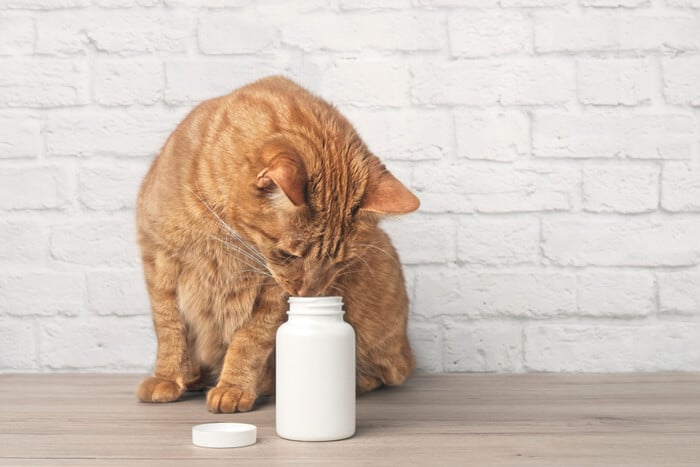
Clavamox is a common antimicrobial antibiotic prescribed for a variety of bacterial infections in cats and dogs. The name Clavamox is a brand name for the generic antibiotic amoxicillin/clavulanate potassium or amoxicillin/clavulanic acid.
Clavamox For Cats Overview

In this article we’ll talk about what Clavamox is, what it does, and some other useful info about dosing and safety.
What Is Clavamox?
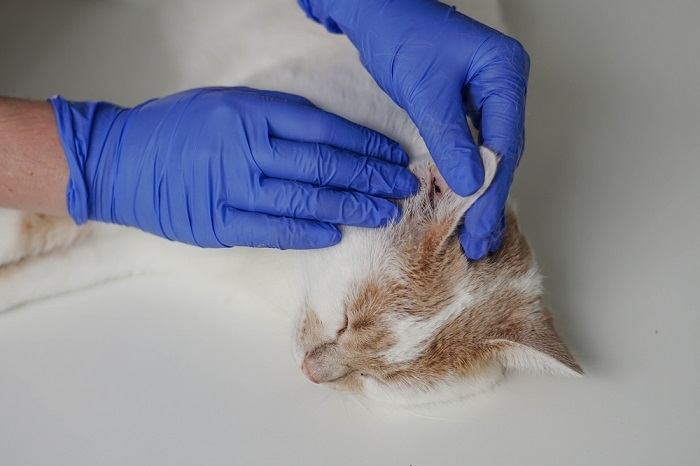
Clavamox is what is called a potentiated penicillin antibiotic. Because of the addition of clavulanate, it can have a broader range of effect compared to plain old amoxicillin and can inhibit something called beta-lactamase, which some bacteria can produce to resist some antibiotics.
Clavamox is typically used for infections of the urinary tract, skin infections, and various infections of the soft tissues such as bite wounds.
Veterinarians also widely use Clavamox for upper respiratory infections as well. Because there are many different types of antibiotics out there, a veterinarian will decide which one is most appropriate to use for a particular patient.
What Does Clavamox Do for Cats?
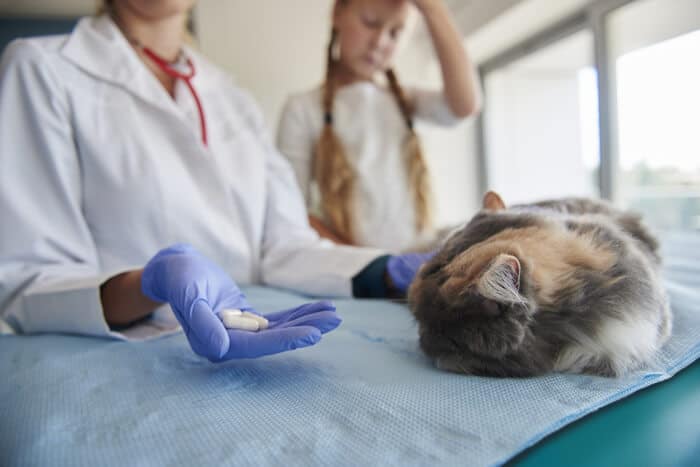
Clavamox kills bacteria associated with infections like upper respiratory infections, urinary tract infections, and soft tissue infections associated with bite wounds and other injuries.
As a bactericidal antibiotic, the role of Clavamox is to kill bacteria that are susceptible to it. In cats, it is most often used for upper respiratory infections, urinary tract infections, and soft tissue infections complicating a bite wound or injury.
Clavamox works by binding directly to certain enzymes located in the cell membrane of susceptible bacteria, inhibiting the development of the cell wall and making the bacteria unstable, thus killing them.
It’s very important to note that Clavamox is not effective against viral infections, a common cause of upper respiratory conditions in cats. Therefore, it’s always important for a vet to decide if the use of an antibiotic is warranted.
Side Effects of Clavamox for Cats
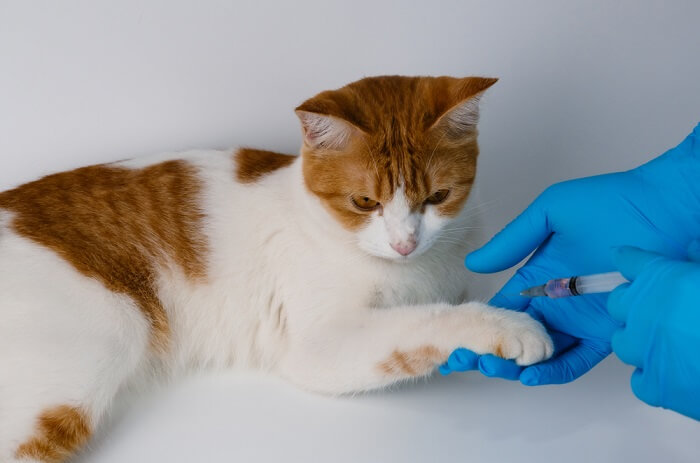
Fortunately, side effects of Clavamox in cats are typically mild and self-limiting. The most common seen is digestive upset in the form of decreased appetite, vomiting, and/or diarrhea.
As a broad-spectrum antibiotic, Clavamox can affect and alter the normal and beneficial bacteria living in the gut, which is often the cause of diarrhea if it occurs.
In many cases, ensuring Clavamox is given in close association with a meal can help to offset stomach upset. If this still occurs, discontinuing Clavamox often leads to resolution of the side effects, but you should only stop a medication with your vet’s advice, especially if it is being used to treat an infection.
If a mild diarrhea develops, use of a probiotic at your vet’s discretion is sometimes helpful. Otherwise, mild side effects may need to be endured if a more serious infection is being successfully treated.
However, if your kitty stops eating, it is very important to tell your vet, since some cats can develop a very serious secondary liver condition from prolonged inappetence alone.
It is extremely rare but possible to see allergic reactions to Clavamox including hives, rashes, fever, and resulting abnormalities in red and white blood cell counts.
For the rare cat this might occur with, any dose could induce these effects and these effects are not dose-dependent. In other words, if your furry pal does well with a prescribed dose, and an extra dose is given accidentally, there is no higher risk for one of these allergic reactions to occur.
Clavamox for Cats Dosage

The published dosage for cats is 62.5mg per cat every 12 hours. However, it’s important to note that the dosage may differ depending on the type of infection being treated as well as a cat’s size or body weight.
Certain kitties that are either very small, like young kittens, or very large kitties suffering from obesity may be prescribed a different dose at a veterinarian’s discretion.
Dosage Forms of Clavamox for Cats

There are a couple of different forms of Clavamox for cats. You or your veterinarian will choose between an oral suspension liquid or tablet form.
Clavamox comes in both an oral suspension liquid form as well as a tablet form. Your veterinarian may have a preference of which form to use, or may leave the dosage form up to you depending on which will be easier to administer.
If your kitty will take a pill mixed with or hidden in food or a treat, this is often easiest and involves the least amount of struggle.
However, if your furry friend is the type that will eat everything in the bowl but the tablet and leave it at the bottom, you may need to consider liquid if you are not adept at administering a pill directly into your cat’s mouth for her to swallow it.
There are both chewable and non-chewable forms of the tablet. Some kitties may take the chewable form as a treat or hidden in food, making dosing much easier.
However, because some cats can certainly be very picky about what they eat, you may find you have to administer the chewable tablet directly or consider the liquid form.
The tablets typically come in sealed blister packs to protect them, as the clavulanic acid portion is considered more susceptible to moisture.
For this reason, it’s important not to open the blister until you’re ready to give the medication. In the same vein, it is typically recommended not to split Clavamox tablets because the second tablet half will then go unused for many hours.
The liquid form needs to be refrigerated. It is often reconstituted with water at your vet’s practice when you receive it. If your vet prescribes two boxes, they should provide you with instructions on how to mix up the second bottle.
The instructions to do this are also printed on the side of the box. Because liquid Clavamox should be discarded after 10 days, it is important not to mix up a new bottle until you are ready to use it.
If a reconstituted bottle of Clavamox has been sitting out at room temperature, it may need to be discarded depending on how long it has been out, usually after a few hours. But it’s always best to give your vet clinic a call before just throwing it away.
Clavamox vs. Augmentin
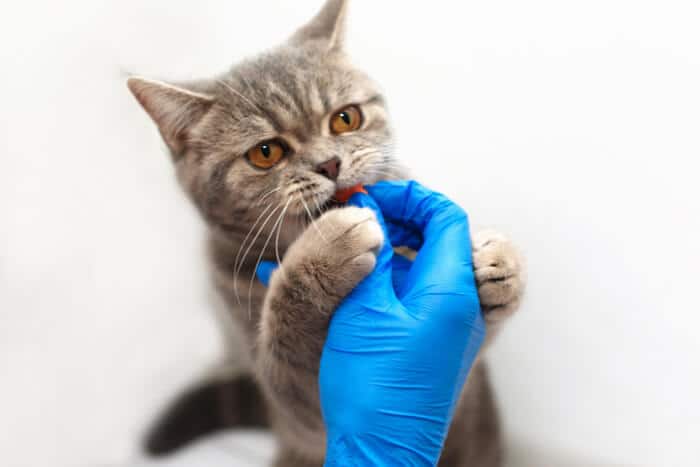
Some human-intended medications contain the same antibiotic found in Clavamox, but the dosage of Augmentin is different.
Generic medications are a popular and sometimes less-expensive alternative pet parents are interested in. Amoxicillin/clavulanate does have another brand dispensed to humans, called Augmentin.
But while they contain the same antibiotics, it is very important to understand that the dosage forms of Augmentin and Clavamox are very different, which is sometimes confusing for pet parents.
Veterinary preparations of amoxicillin/clavulanate like Clavamox have dosages expressed as the total of both the amoxicillin and clavulanate components, whereas with Augmentin and generic human forms, the dosage is typically expressed only as the amoxicillin dosage. Therefore, 125mg of Augmentin is not the same thing as 125mg of Clavamox.
For kitties, Augmentin tablets may be impractical, as the lowest dosage tablet available is double the recommended dosage for most cats (i.e. 62.5mg tablets of Augmentin do not exist). For these reasons, your veterinarian may insist on prescribing a veterinary preparation like Clavamox for your feline friend.
Concluding Thoughts on Clavamox

Clavamox is truly one of the “hardest-working” antibiotics we have available in veterinary medicine and one of the most widely-prescribed for cats.
However, it’s really important to make sure it is only used when dispensed or prescribed by a veterinarian, and that all prescribing instructions are followed.
Indiscriminate use of any antibiotic can lead to resistant bacterial populations, which makes treating infections more difficult. Always make sure to give an antibiotic prescribed by your vet for the full number of days indicated, even if your kitty looks like he’s feeling better.
Drug Dosing Disclaimer: We are only able to provide doses for medications that are FDA approved for use in cats and only as the label guidelines dictate. For medications that are used off-label we can only provide guidelines and safety information for use. Safe and appropriate dosing for off-label medications can only be determined by a primary care veterinarian.
We encourage you to work with your veterinarian to determine if a particular medication is appropriate for your cat. Changing or adjusting a dose for your cat on your own without consulting with a veterinarian can carry risk. We do not encourage use of medications prescribed for human use in pets without first consulting with a primary care veterinarian.
Frequently Asked Questions
What is Clavamox used for in cats?
Clavamox is an antibiotic used to kill susceptible bacteria. It is often prescribed by veterinarians based on the types of bacterial populations most likely to be present in the affected area of the body. However, in some cases, your vet may wish to obtain a sample of the area for culture (such as a sterile urine sample or a sterile swab from an infected area of tissue) to determine exactly what antibiotic the bacteria causing the infection are susceptible to.
How Long Does Clavamox Take to Work in Cats?
For most susceptible bacterial infections, you will typically see noticeable improvement within 2-3 days of use. Full resolution for an infection depends a lot on the location and severity. This is why it’s always important to follow the prescribed directions and to finish out all of an antibiotic even if your kitty is looking much better.
If you don't feel that your kitty's signs of illness are improved at all after 3 days of use of any antibiotic, it's always a good idea to give your vet a call and let them know. It's possible your vet may make some additional recommendations.
How do you give Clavamox to a Cat?
Clavamox comes in three forms: a chewable tablet, a non-chewable tablet, and a liquid oral suspension. You and your vet should decide together which form may be best for your furry pal.
If you think your kitty may eat the tablet (if a chewable) or by hiding it in canned or soft food or with a treat like a Pill Pocket, this is the least stressful way to give it for everybody. However, some kitties may eat around it or spit the tablet out.
The only other way to give a tablet is directly in your kitty’s mouth. Using a tool called a “pill popper” or “pilling gun” can make this method fast and easy, but still requires a certain level of skill and learning how to do it properly and safely. If you’re not familiar with directly administering a pill to a cat, having your vet or a veterinary staff member provide a demonstration may be the best way to learn how.
Many medications were not intended to be crushed or mixed with water, so before doing this to any medication to help with administration, make sure to ask your vet if this is okay.
The liquid form of Clavamox can sometimes be a good alternative for cats where pills don’t work well, as well as for very small cats and kittens. The liquid is administered directly into a cat’s mouth using an oral dosing syringe provided by your vet.
The liquid does however tend to be messier, and you may find that your kitty either spits some out afterwards or may be more prone to drooling after. Mixing the liquid with food is less likely to be an effective way of administering it.
What Infections does Clavamox Treat?
Clavamox reaches effective concentrations in many parts of the body, making it a versatile antibiotic for many types of infections.
The most common types of infections Clavamox is used for in cats include respiratory infections in the lungs, urinary tract infections, and infections of the skin and soft tissues, especially when wounds are involved.
The right type of antibiotic used for an illness should always be up to the discretion of your cat’s veterinarian. Clavamox is not appropriate in all cases. It’s also important to remember that Clavamox is only effective against bacteria and not against viral or fungal infections. In some cases, your vet may wish to collect a sample of the affected area for culture to verify what antibiotic will be most effective.


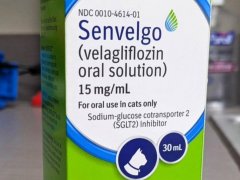



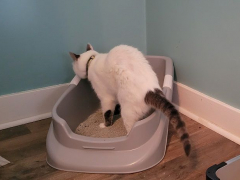

Is it okay if doses of clavaseptin 62.5mg are given every 8 hours? this is the usual feeding routine for my cat.
Hi Nanci,
From referencing drugs.com, Clavaseptin is similar to Clavamox in that the milligram dosage is the combination of the the amoxicillin and the clavulanic acid, and is made for dogs and cats. Manufacturer is Vetoquinol, a veterinary company (as opposed to Augmentin or a generic human version where the dosages are expressed differently as explained in the article). While giving plain amoxicillin every 8 hours may be necessary depending on what is being treated, there is no need to give the amoxicillin-clavulanate combination that often based on its pharmacokinetics (how the medication is absorbed and metabolized). It’s only labeled (for Clavamox or Clavaseptin) every 12 hours. I have never seen it prescribed every 8 hours. If your cat is fed every 8 hours, I would still try my best to give it on a roughly every 12 hour schedule. If it’s not exact, that’s usually okay (an hour or two more or less) if you need to be flexible with your schedule. But I wouldn’t give it three times a day.
Can a diabetic cat taking insulin also take clavamox?
Hi Michelle,
Yes, these can be given together and there are no known interactions. Diabetics can be prone to opportunistic infections, especially urinary tract infections, and Clavamox is a very common selection.
My cat has an oral infection and prescribed liquid clavamox but we can’t get the cat to open month to inject dose. Am I able to mix the liquid dose in with her wet food?
Hi Natalie,
The short answer is yes, you can mix the liquid Clavamox with wet food. But for that to work, your kitty must eat the whole amount of food with the medication in one sitting. If she’s going to snack on it throughout the day, that approach may not be very effective.
Clavamox doseage for. elderly cat with UTI. She was prescribed a dose of .750ml rather than 1 ml due to low weight of 5.7 lbs. After 8-1/2 days or the entire bottle, the symptoms returned within 1 day following finishing the Clavamox bottle. Is the dose too low to be effective and should it be 1 ml despite her low body weight. She is hyperthyroid and has other concurrent issues (liver/kidney due to hyperthyroidism). I have her back on Clavamox, 2d bottle, now a total of 14 days. Vet says stay with lower dose. Your thoughts?
Hi Carol, I don’t feel that the dose is inappropriate. Treating some infections sometimes require longer courses than others. Your vet is also likely trying to limit gastrointestinal side effects in a smaller cat. This could be a situation where a urine culture would be needed if signs of a problem returned again to see if you may be dealing with a resistant bacterial strain or to have a bladder ultrasound (if not already done as a way of collecting the original urine sample used to diagnose the UTI) to see if there are any other bladder concerns that could be contributing.
I have a pet feral cat who has wound infection on his face draining and also congestion in face. I can’t get him to a vet in person and have not been able to know what to do -.its not getting better- I read up on Clavamox and can buy it – I’m an RN and familiar with antibiotics – should I just go ahead and proceed.
Hi Janice,
I’m afraid I can’t advise you directly in this case. But I think most vets like myself would suggest you make the most humane decision you feel is appropriate.
It’s also important to keep in mind the difficulty and risk to yourself of trying to orally medicate a feral cat.
If your concern is that you cannot get this cat to a vet because of being feral, I would suggest reaching out to a local rescue group. In my experience at least, they can help to catch a sick or injured feral cat with a Havahart trap so that they can be brought in for veterinary care. Sometimes, a long-acting injectible antibiotic (Convenia) is more practical because it avoids the need for trying to orally medicate a feral cat twice a day.
Antibiotics may help, but this could also be a wound that needs more direct care or repair. It may also not be a simple wound or infection but there’s no way to know without being examined.
i cannot thank you enough for your input. I have not been able to yet to pick him up and get him into a cat carrier, or have been hesitant to do so, but its my own distress at his sickness. Don’t know if this will turn into systemic or sepsis. I thought he was dying this morning in his cat house, but then he left the house. I have reached out to some mobile vets but have not connected with them so far. By humane, did you mean contain him and call Baltimore County Animal control for pick up and euthanasia ? My problem is I just don’t know what to do with or for him. Thanks for addressing that his wounds may not be a simple fix – I thought I could put oral antibiotic in his food. Again, thank you for your response.
Janice
Hi Janice, since I don’t know the true extent of his condition, I did not and cannot advise euthanasia from here. But by humane, I did mean doing what you think is best for this cat with what you have available. I would try reaching out to a rescue group if you can as they may be in the best position and have the right experience to help you if you’re having trouble reaching a vet. I found this one for the Baltimore area: https://www.baltimorecats.org/.
My 2 1/2 year old cat was on clavamox 1ml every 12 hours for the past week and a half of a 14 day course for a urinary tract infection. After about 9 days of this he vomited but, since he sometimes over eats and vomits, we thought nothing of it and continued the medication. Yesterday we gave his morning does and within 30 minutes he vomited it up. We stopped the medication, took him off his food, made sure he has plenty of water but he continues to vomit up frothy bile intermittently. I assume this is a gastric reaction to the clavamox. Is there anything we should do to help him as his stomach settles and this resolves?
Thanks so much!
Hi Anna,
It’s certainly possible you could be seeing GI upset from the Clavamox. In many cases, discontinuing the antibiotic will help the signs to resolve. If some mild signs of digestive upset continue you can consider omeprazole (Prilosec) to help settle the stomach. The link for the omeprazole article should be helpful for you.
While I often prescribe 14 day courses of antibiotics myself, simple UTIs may resolve within 7-10 days. If you do need to stop the Clavamox, it is always best to schedule a recheck urine sample with your vet to ensure the UTI is resolved.
Thank you Dr. Chris! It has been abotu 36 hours since we stopped the Clavamox and he seems to be improving. His last emesis was around 4 this morning (that we know of) so we’ll keep an eye on him and try Prilosec if it happens again.
His UTI seems to be resolved. No more voiding outside the litter boc in over a week!
Again, that you for our help.
My vet prescribed Clavamox for my 14 year old 14 lb cat for a lung infection. They also gave me a probiotic for him. I’m so nervous to start giving him the antibiotics because of potential side effects, especially the vomiting and diarrhea. Is there anything you can tell me to ease my concerns? Should I try to feed him his wet food first and then give him the antibiotic afterwards in the AM and in the PM? And when am I supposed give him the probiotic so it doesn’t impact the antibiotic dose twice a day?
Hi Krista,
I think it’s important to remember that side effects, like vomiting and diarrhea with Clavamox, are only possibilities and not definite. Many cats take Clavamox just fine without those effects. We also can only do what we can within reason to reduce the possibility of side effects, but in the end this is up to an individual cat’s body and we don’t have full control over the result.
If your kitty has pneumonia, I think it’s also important to put things in perspective. Pneumonia can be life-threatening if it progresses. Vomiting and diarrhea as side effects, while undesired and sometimes difficult, would be preferred compared to letting a bacterial pneumonia go untreated. Don’t be more concerned about the possibility of side effects than you are about an existing illness.
It can certainly help to give many antibiotics with food to reduce the chance of gastrointestinal upset. For the probiotic, you can consider giving the probiotic 30min to 1 hour after the antibiotic to reduce the risk of them interacting.
My vet said my cat has to take Clavamox for the rest of her life due to e.coli in the kidneys. I don’t belive my cat needs to take antibiotics for life, compromising the immune system. Is 14 days enough, like any other antibiotic?
Hi Fi,
A kidney infection (pyelonephritis) is often not a simple infection that will resolve within 14 days. Many times, a period of at least 4-8 weeks may be needed. For best success, it is best to choose an antibiotic based on culture and antibiotic sensitivity testing. A negative culture should then be used to verify the infection is resolved.
I don’t know the circumstances here of course. Kidney infections may resolve successfully. But cats with kidney infections can be at a high risk for unresolved or recurrent kidney infections. This can lead to kidney damage and/or failure. It is also possible for a kidney infection to spread through the bloodstream to other areas of the body.
If this is a new illness for your cat, it is reasonable to treat for the right amount of time based on culture to see if it resolves. But if your cat has had this condition recurrently, this may be the basis for your vet’s recommendations. Their hope may be to prevent those complications.
I have a 12 pound male cat that was percribed 1.9ml of clavamox twice a day. He became very sick. Diarrhea, vomiting, barley eating, and no energy. Is this too high of a dose for his weight? He is better now. I took him to another vet he was given shot to help with his appetite and vomiting. 12 hours later he was back to his normal self again.
I am looking after a community cat who has a facial injury. Clavamox was prescribed for him, and I was told to give him
1 – 1.25 ml twice a day. I only feed him once a day. Can I give him 2 ml once a day?
Hi Karen,
Although I understand your intention, unfortunately giving Clavamox only once a day would be less likely to be effective, could introduce antibiotic resistance, and may increase risk for side effects. Intuitively, it would seem that giving the whole daily volume once a day instead of splitting it twice a day might work, however, antibiotics as well as other drugs are absorbed in different ways by the body. Some antibiotics can be given once a day while others must be given every 12 hours. After 12 hours, your Clavamox concentration in the body has already diminished. This will not matter if you give 1ml or 2ml, you’d still need to give more 12 hours later. In order to maintain the right concentration that kills susceptible bacteria, it needs to be given that frequently. In order for the treatment to be successful, you’d need to alter the schedule for at least 10 days or otherwise the amount prescribed so you can get out there twice roughly 12 hours apart. It doesn’t have to be perfect, but as close as you can get morning and evening.
My cat is 22 lbs, just a big guy. He has been on Clavimax twice in a row for a urinary infection. It is clearing up but the vet wants me to give it for seven more days. He has me giving him 1 1/2 mls twice a day. Should I be giving him more since he is so big?
Hi Cheryl, I would recommend following your vet’s recommendation and asking him for clarification—no one here knows your cat’s needs as well as your vet does.
Thanks. I do not have a “call for prescription” relatinship with a vet. Vets have been known to tell me to drive 180 miles at 3 am, and charge 300 bucks to get an answer to a simple question. The mouth does need surgery but both the vet I sometimes see and I are nervous about full aneshetic on a cat this old. I’ll get in when I can and/or look for another vet closer than 80 miles, one way. Thanks again.
I asked a question yesterday but I don’t see it posted here yet. I stopped in today to say, “oops! figured that all wrong, missed a step in figuring dose.” What I have now is: to get 62.5 mg doses from a 875/125 human generic Clavamox pill I should add 14 ml of water to a dissolved human pill to get 14 62.5 mg per one ml dose. (1000 mg human divided by 62.5 cat= 14 cat dose per human dose.) Is that correct? Dose for 7-10 days? The cat is about 15 yo and gets recurring tooth/gum infections. I cannot get to a vet for a while.
thanks
troi
Hi Troi,
Unfortunately I can’t provide specific dosing advice on using Augmentin, since it is not labeled for use in cats. Its dosing can be very tricky and its off-label use is best determined by a veterinarian with whom you have an existing relationship. Even if you cannot get into see a vet right now, you hopefully have an existing relationship with one and may be able to forward your question. It’s not clear what the nature of the tooth infection is, but ultimately recurrent use of antibiotics for a tooth abscess or general periodontal disease may contribute more to antibiotic resistance. In many cases the tooth itself is the issue and needs to be removed with an anesthetic dental procedure to fully resolve the problem.
My 15 yr old 10 lb cat has a recurring tooth infection. I cannot get to the vet. I have on hand augmentin for an infection I had. Pill is 875 mg/125 mg. My figuring gets me one pill in 30 ml of filtered water is 14 doses at .5 ml per dose, which I figure is about 62.5 mg of the amoxicillin and a bit too much of the clavulanic acid. Should I dilute this a bit until I can get cat doses? I think I should.
My cat is 16 and developed a UTI. He had bloody urine and the vet put him on clamavox until the urine culture comes back. The problem is he’s lethargic, developed diareah and vomiting. I now have to force feed him because he won’t eat. . I’m still waiting for the culture. Is there an antibiotic that isn’t so harsh on his stomach. I’m doing antibiotics , appetite stimulants and fluids along with pain meds..Can I just give once a day until I get the culture back .
Hi Judy, I’m sorry to hear your kitty is having such a hard time. Unfortunately, digestive upset in the form of vomiting/and or diarrhea and a decrease in appetite could occur with any antibiotic and there is not one out there that is going to be reliably or predictably less harsh on the digestive system. While some antibiotics can be given once a day, Clavamox is not one that maintains appropriate concentrations for that long. Giving it once a day would contribute more to antibiotic resistance. In these situations, there are two paths of options to consider, which are continuing the antibiotic and adding other supportive measures to address the side effect symptoms (in this case, medication to help with the vomiting and diarrhea) or to discontinue the antibiotic, see if the side effect symptoms resolve, and then try to reinitiate therapy. It would be best to discuss with your veterinarian which path would be best here, especially with the pending urine culture on the way.
How much clavamox for a kitten barley 2 pounds? The vet prescribed 0.12 for my 7-8 week old kitten with upper respiratory infection. Seems like a lot.
Hi AnaMarie,
I always encourage folks to touch base with their vet if they have questions about specific dosing of a medication. That being said, that dosage volume would seem to me to be appropriate for a kitten of that size at 0.12ml for a kitten just under 2lb. Certainly not too high a dose. Re-weighing during treatment can also be helpful for small kittens to ensure we are not under-dosing as they grow, depending on how long the treatment is needed for.
My senior female cat has a urinary infection. After only one day on Clavamox she is already eating much less. The vet wants her to stay on this drug for two weeks. That seems like a long time to me. What are your thoughts?
Hi Max, a treatment period of 2 weeks is very common for urinary tract infections in pets. There is always the risk of decreased appetite when using oral antibiotics, especially in cats, if only because they are offended by the taste. Unfortunately, stopping an antibiotic too soon may leave the hardiest bacteria left to regrow, which is what contributes to antibiotic resistant infections. If your cat has a slightly decreased appetite but still eats steadily and this doesn’t worsen, the Clavamox should be continued. When the Clavamox is discontinued, a normal appetite should then return. If her appetite continues to decline, some potential options to discuss with your vet could include rechecking a urine sample after 7-10 days to see if the infection may already be resolved, or using an appetite stimulant (there is a topical one available now called Mirataz that avoids the need for another oral medication) to help her appetite along while the antibiotic is being finished. If she stops eating completely, an oral antibiotic may have to be discontinued due to the significant concerns this could cause in a cat. In this case, sometimes the long-acting 2-week Convenia injection may be an option to avoid the oral route. But hopefully, her appetite will not continue to worsen and you’ll be able to finish out the Clavamox and get rid of that UTI.
Thankyou for your reply. I did contact her vet. He also suggested giving her some Benadryl drops (uh no!!) It took the whole treatment but, she has recovered. Thankyou again
My 9m old kitten has been on Clavamox 1cc twice a day for the last 31/2 days for a URI. Tonight when she sneezed it was bloody. It is the only blood I’ve noticed. Should I be concerned?
Hi Teresa,
If your kitten has been sneezing a lot, you may be seeing some blood because of irritation of the nasal passages. However, I would still consider this something to notify your vet about. You should be seeing some noticeable improvement in sneezing and discharge by this point. If you’re not, this is also important to notify your vet about. If you haven’t yet, use of a humidifier or keeping your kitten in the bathroom with you during a shower for the benefits of the steam produced can help to loosen congestion and moisten the nasal passages, which may also help.
If it says one dose every 12 hrs – does it matter if it goes to 11 or 13 hours in between on some days?
Hi Helen,
This is a great question. One hour on either end will not affect things significantly, but it is important to stay as consistent as possible. Problems with efficacy of an antibiotic may be more likely to develop if doses are missed, extending 12 hours to 18 or 24 hours between doses instead. Time delays of that long will allow levels of the antibiotic in the body to drop below therapeutic levels and allow the hardier bacteria still around to proliferate, which is how resistance can develop. But if you’re a little late or a little early with a dose in the ranges you mentioned, you’ll generally be okay.
Our kitten has a weight of 5 pounds. He has a bacterial ear infection and a stuffy nose. There is no snot and he does not sneeze. As prescribed by the doctor, we gave Clavamox 0.5 ml for 7 days. Nothing has changed in his condition. Do we need to continue giving Clavamox or does he need another medication?
Hi there, I would advise talking to your veterinarian about your cat’s progress and asking if there are any other medications that may be able to address the underlying condition here.
Is Clavamax good for the cat virous?
Hi Sheena,
Thanks for your question, as it is a very good one. There are several types of viruses that can affect cats, but the common one that folks ask about is feline herpes virus, which is a common culprit for upper respiratory infections. Unfortunately, no antibiotics are effective against feline herpes virus, or most viruses in general. They only work against bacteria.
This is why it is very important to have a kitty seen by a veterinarian if he or she starts to show signs of an upper respiratory infection. In many cases, especially if there is no fever, nasal discharge, or other signs of illness like lethargy or poor appetite, antibiotics are not indicated and some other supportive care can be used instead.
By using antibiotics judiciously, we help to reduce the risk of antibiotic-resistant strains of bacteria, which unfortunately are becoming all the more common due to inappropriate antibiotic use.
How to get my cat drink more water now that he’s taking the antibiotic Clavamox 62.5 mg..
Hi Lisa, this is a great question. From knowing that cats tend to be fascinated by water and are water seekers, I have found a couple methods to be helpful to encourage water intake. Increasing the number and availability of water bowls can help, as your cat may find it fascinating to seek out these new locations. Cats also are intrigued by running water, so getting a cat fountain can be another way. You can also increase water intake through food. Canned or moist foods have a high percentage of water in them, so you can temporarily increase the amount of canned food your are feeding. If you think your cat will tolerate it, some folks will also experiment with adding some water to the dry food, though this may turn off some kitties who like their crunchy food. I hope that is helpful for you and that your kitty feels better soon.
I have a 12 day old kitten with two infected toes. Can I give him a drop of Clavamox? Have had kitten since it was a day or two old. Brought in to local shelter with litter mates who all died. Person who brought them in claimed he found them. Person was homeless, kittens probably born to feral mom. Don’t know condition of mom.
Hi Paige,
First, if you think this little kitten has two infected toes, he/she needs to have some direct veterinary assessment and care. I can only provide some limited suggestions without the ability to examine this little one. Antibiotics may help, and it sounds like you might have Clavamox on hand, but there can be a lot missed that may be needed without a veterinarian’s exam.
It’s hard to tell if one “drop” of Clavamox would be sufficient. Antibiotic dosing is always based on weight. There is some debate about Clavamox when it comes to very small cats and kittens, but 1ml per 10lb is one commonly accepted dose. This equates to the average 10lb cat getting 62.5mg or 1ml, which is the labeled dose for Clavamox. For any cat smaller than that, we should use the weight in lb multiplied by the conversion factor of 1ml / 10lb to get an accurate volume. This might still come out to just a “drop”, like 0.05ml or something like that, but at least you’ll know it’s accurate. Many vets use actual 1 or 3ml dosing syringes in place of the droppers that Clavamox comes with, because syringes are more accurate.
It’s true Clavamox does have a very high margin of safety, but an attending veterinarian could help with the most accurate dosing for your little kitten, as well as any other needed treatment advice.
My cat started 125 mg chewable tablets. Started vomiting shortly after and for hours after . Her face is puffy and she feels warm. I have given her a dose of Prednisolone. Is this an allergic reaction? She taken the lower dose before with no issue.
Hi Sarah,
While we can see vomiting with any antibiotic, what you describe is certainly less typical than what is seen more often as a side effect. That plus the puffy face you describe is more consistent with an allergic reaction to me. While a higher dose could cause more digestive upset, I’m not sure why an allergic reaction would be seen, as allergic reactions to medications aren’t usually dose dependent–they either happen or they don’t because it’s a reaction to the drug itself. We do know that an allergy can develop at any time though, so it could be a change that’s occurred in her body since the last round of clavamox. But regardless, let’s make sure the allergic reaction is cared for properly. The oral prednisolone is a good start, but suppressing the immune system in cats sometimes requires high doses of steroids and the continued vomiting may affect how something oral is absorbed. If the puffy face has not resolved or anything else worsens, she may really need urgent care for some injectible medications. Make sure to get in touch with your vet to report this occurrence and discuss options. Your kitty will likely still need an antibiotic for whatever the clavamox was prescribed for. The prednisolone may need to be given for 2-3 days to prevent recurrence of the allergy signs.